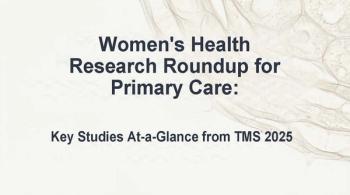
Obesity Algorithm Challenge: 8 Questions
Test your knowledge of the newly updated obesity algorithm from the Obesity Medicine Association with this 8-question challenge.
The Obesity Medicine Association (OMA) recently released the 2018
Question 1.
Answer: B. False. Between 2015 and 2016, the prevalence of obesity was higher among US adults (40%) vs youth (18.5%).
Question 2.
Answer: D. 35-39.9. A BMI between 18.5-24.9 kg/m2 is classified as normal, 25.0-29.9 kg/m2 is classified as overweight, 30.0-34.9 kg/m2 is classified as class I obesity, 35-39.9 kg/m2 is classified as class II obesity, and ≥40 kg/m2 is classified as class III obesity.
Question 3.
Answer: D. 32%. In women, a body fat percentage of ≥32% is classified as overweight or obese.
Question 4.
Answer: B. False. DXA measures fat mass and lean soft tissue mass OR soft tissue mass and bone mineral mass, but not fat mass and soft tissue mass.
Question 5.
Answer: E. B and D. The prevalence of obesity was highest among non-Hispanic black and Hispanic adults vs non-Hispanic white and non-Hispanic Asian adults.
Question 6.
Answer: C. Orlistat. While orlistat (Alli, Xenical) is an FDA-approved anti-obesity drug, it was approved in 1999. Phentermine HCL/topiramate extended release (Qsymia) and lorcaserin (Belviq) were first approved in 2012 and liraglutide (Saxenda) was first approved in 2014.
Question 7.
Answer: A. <5000. <5000 steps taken per day is considered sedentary and this is the national average for US adults.
Question 8.
Answer: A. True. The OMA recommends that patients walk 10 minutes for every hour they have been sitting.
References:
For more information, please visit
Newsletter
Enhance your clinical practice with the Patient Care newsletter, offering the latest evidence-based guidelines, diagnostic insights, and treatment strategies for primary care physicians.















































































































































































































































































